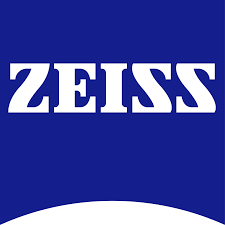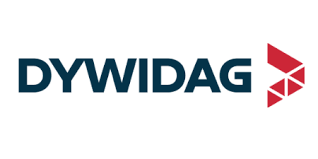Smart Prosthetics
Published Date: March 16, 2024 | Report Code: smart-prosthetics
Smart Prosthetics Market Size, Share, Industry Trends and Forecast to 2033
This report on the Smart Prosthetics market offers a detailed exploration of current trends, market size, CAGR, technological innovations, segmentation, and regional analysis. Covering the forecast period 2024 to 2033, it provides key insights and data-driven forecasts to help industry stakeholders understand growth opportunities and pressing challenges in this evolving sector.
| Metric | Value |
|---|---|
| Study Period | 2024 - 2033 |
| 2024 Market Size | $6.80 Billion |
| CAGR (2024-2033) | 8.2% |
| 2033 Market Size | $14.14 Billion |
| Top Companies | BioMotion Inc., NeuroTech Solutions |
| Last Modified Date | 06 October 2025 |
Smart Prosthetics (2024 - 2033)
Smart Prosthetics Market Overview
What is the Market Size & CAGR of Smart Prosthetics market in 2024?
Smart Prosthetics Industry Analysis
Smart Prosthetics Market Segmentation and Scope
Request a custom research report for industry.
Smart Prosthetics Market Analysis Report by Region
Europe Smart Prosthetics:
Europe is witnessing substantial growth in the Smart Prosthetics market, with the market size expected to increase from 2.36 in 2024 to 4.91 by 2033. High healthcare standards, comprehensive insurance coverage, and continuous technological innovation support the market’s development. Active collaborations between academic institutions and industry giants have resulted in product refinements and enhanced user outcomes. Regulations and quality standards also ensure that innovation remains patient-centric, boosting consumer confidence and market expansion.Asia Pacific Smart Prosthetics:
The Asia Pacific region is emerging as a significant contributor to the Smart Prosthetics market, with the market size expected to grow from 1.28 in 2024 to 2.67 by 2033. Factors such as increasing healthcare infrastructure investments, a surge in the prevalence of lifestyle diseases, and favorable government policies are driving this growth. Rapid urbanization and technological adoption in countries like India and China further bolster market expansion, creating opportunities for both domestic and international manufacturers.North America Smart Prosthetics:
North America remains one of the leading markets for smart prosthetic devices, with its market size expanding from 2.28 in 2024 to 4.74 by 2033. The region benefits from advanced healthcare systems, robust R&D infrastructure, and high patient awareness. Innovations in technology and strong government support, coupled with significant investments in bioengineering and robotics, continue to drive the market forward, cementing its position as a trendsetter in medical device innovation.South America Smart Prosthetics:
South America, though representing a smaller market segment with an initial market size of 0.13 in 2024 growing to 0.27 by 2033, is experiencing steady growth. Increased public health spending, growing private sector investments, and improving access to advanced healthcare services are contributing to market development. The focus on modernizing rehabilitation and prosthetic care in emerging economies is expected to gradually improve market penetration.Middle East & Africa Smart Prosthetics:
The Middle East and Africa region is poised for promising development with market sizes growing from 0.75 in 2024 to 1.55 by 2033. Although currently smaller in scale, the region is experiencing increased investments in healthcare infrastructure and technology. Initiatives aimed at expanding access to advanced medical solutions and rehabilitation services are beginning to yield results. Enhanced awareness and targeted government funding are expected to accelerate market growth, offering lucrative opportunities for new entrants and established companies alike.Request a custom research report for industry.
Smart Prosthetics Market Analysis By Product Type
Global Smart Prosthetics Market, By Product Type Market Analysis (2024 - 2033)
The by-product-type segmentation of the Smart Prosthetics market delves into the analysis of devices based on physical functionalities and design innovations. This segment includes upper limb prosthetics, lower limb prosthetics, and advanced prosthetics that go beyond conventional technologies. Upper limb prosthetics, for instance, are designed to offer fine motor skills and complex movement capabilities, while lower limb prosthetics focus on stability, energy efficiency, and resilience. Advanced prosthetics integrate cutting-edge sensors and machine learning algorithms to provide adaptive performance. The market analysis also reflects differences in design requirements based on target demographics such as individual users and specialized facilities. With customization and user comfort driving demand, manufacturers are exploring state-of-the-art materials and ergonomics to create products that are both functional and aesthetically pleasing. The segment underscores the importance of product differentiation in capturing niche markets and broadening overall accessibility.
Smart Prosthetics Market Analysis By Technology
Global Smart Prosthetics Market, By Technology Market Analysis (2024 - 2033)
Technology is at the heart of the Smart Prosthetics market, with innovations radically transforming traditional prosthetic solutions. Key technologies include myoelectric, robotics, and neuromuscular systems. Myoelectric technology leverages electrical signals generated by muscles to control prosthetic movement, offering precision and a natural range of motion. Robotics in prosthetics integrates automated control systems, enabling advanced motion patterns and adaptive functionality. Meanwhile, neuromuscular technology focuses on mimicking natural nerve impulses to facilitate smoother, more intuitive operations. Such innovations not only enhance the functionality and responsiveness of prosthetic devices but also significantly improve the user experience. Investments in these technologies are increasing as companies seek to reduce production costs and improve performance, spurring further research and development. This analysis highlights the competitive advantage provided by technological innovation in differentiating products and meeting the evolving needs of a diverse and demanding user base.
Smart Prosthetics Market Analysis By Application
Global Smart Prosthetics Market, By Application Market Analysis (2024 - 2033)
The by-application segment of the Smart Prosthetics market explores the various use cases and clinical as well as non-clinical applications of prosthetic technologies. Major applications include rehabilitation, assistive living, and sports and fitness. In rehabilitation, smart prosthetic devices provide critical support to patients recovering from injuries, enabling improved mobility and better physiological outcomes. The assistive living segment addresses the needs of the elderly and disabled, providing devices that enhance daily functioning and independence. In the realm of sports and fitness, specialized devices are designed to help athletes or active individuals maintain peak performance levels while accommodating physical limitations. Each application area has unique requirements, driving distinct innovation in terms of design, functionality, and performance. The gradual convergence of clinical research with technological advancements is expected to drive market expansion in each of these segments, offering customized solutions to a wide spectrum of users.
Smart Prosthetics Market Analysis By End User
Global Smart Prosthetics Market, By End User Market Analysis (2024 - 2033)
The by-end-user segmentation of the Smart Prosthetics market identifies the primary consumers and key beneficiaries of advanced prosthetic technologies. The market is broadly divided among individual users, healthcare facilities, and research institutes. Individual users, who represent a significant portion of the market, demand high-performance devices that deliver both functionality and comfort in daily use. Healthcare facilities require a broader range of prosthetic solutions tailored for acute and long-term care settings where reliability and ease of maintenance are critical. Research institutes drive innovation by focusing on experimental designs and breakthrough technologies that have the potential to redefine user experience and efficiency. This segmentation provides invaluable insights into changing consumer demands and the need for differentiated product offerings. Companies are increasingly investing in targeted strategies for each segment to optimize usability, cost-effectiveness, and overall patient outcomes, thereby enhancing market penetration and growth.
Smart Prosthetics Market Analysis By Materials
Global Smart Prosthetics Market, By Materials Market Analysis (2024 - 2033)
Materials play a critical role in the design and performance of smart prosthetic devices. This segmentation focuses on the usage of different materials such as metals, plastics, and composites in the manufacturing process. Metals are prized for their strength, durability, and reliability, making them ideal for core structural components. Plastics, on the other hand, offer the benefits of lightweight design and flexibility, while composites combine the best attributes of both metals and plastics to deliver superior performance. The choice of materials influences the overall cost, weight, and efficacy of prosthetic devices. Manufacturers are continuously researching advanced composites and innovative fabrication techniques to produce prosthetics that are not only durable but also ergonomically optimized for enhanced comfort. This material-based segmentation aids companies in identifying trends and developing products that meet the dual criteria of performance and user-friendliness, thereby strengthening their competitive positioning in the market.
Smart Prosthetics Market Trends and Future Forecast
Request a custom research report for industry.
Global Market Leaders and Top Companies in Smart Prosthetics Industry
BioMotion Inc.:
BioMotion Inc. has established itself as a pioneer in the Smart Prosthetics market by integrating advanced sensor technologies and machine learning algorithms into its prosthetic solutions. The company focuses on delivering highly customizable products that enhance mobility and patient comfort, thereby driving significant market growth.NeuroTech Solutions:
NeuroTech Solutions is renowned for its innovation in neuromuscular and robotics technologies for prosthetic devices. By forging robust partnerships with leading research institutes and healthcare facilities, the company has set new industry standards in reliability, performance, and user adaptability.We're grateful to work with incredible clients.









Related Industries
FAQs
What is the market size of smart Prosthetics?
The smart prosthetics market is projected to reach $6.8 billion by 2033, growing at a robust CAGR of 8.2%. This growth is fueled by advancements in technology and increasing demand for enhanced mobility solutions.
What are the key market players or companies in the smart Prosthetics industry?
Key players include companies specializing in prosthetics development such as Össur, Biomet, and Ottobock. Their innovative products drive competition and foster growth within this burgeoning market.
What are the primary factors driving the growth in the smart Prosthetics industry?
Growth is driven by technological advancements, increased incidence of disabilities, and rising demand for personalized healthcare solutions. Innovations such as myoelectric limbs enhance user experience and functionality.
Which region is the fastest Growing in the smart Prosthetics market?
The Asia Pacific region is witnessing rapid growth, expected to increase from $1.28 billion in 2024 to $2.67 billion by 2033, as access to healthcare and technological adoption improve.
Does ConsInsights provide customized market report data for the smart Prosthetics industry?
Yes, ConsInsights offers customized market reports tailored to specific client needs, delivering insights that include trends, forecasts, and segmentation data to better inform strategic decisions.
What deliverables can I expect from this smart Prosthetics market research project?
Deliverables include comprehensive reports with market size, forecasts, competitive analysis, segmentation details, and regional insights to aid in strategic planning for stakeholders.
What are the market trends of smart Prosthetics?
Current trends include the rise of myoelectric and robotics technologies, emphasis on individualized healthcare solutions, and increased integration of AI, driving innovation and consumer adoption.
Customize Smart Prosthetics market research report
- ✔ Get in-depth analysis of Smart Prosthetics market size, growth, and forecasts.
- ✔ Understand Smart Prosthetics's regional dynamics and industry-specific trends.
- ✔ Identify potential applications, end-user demand, and growth segments in Smart Prosthetics
